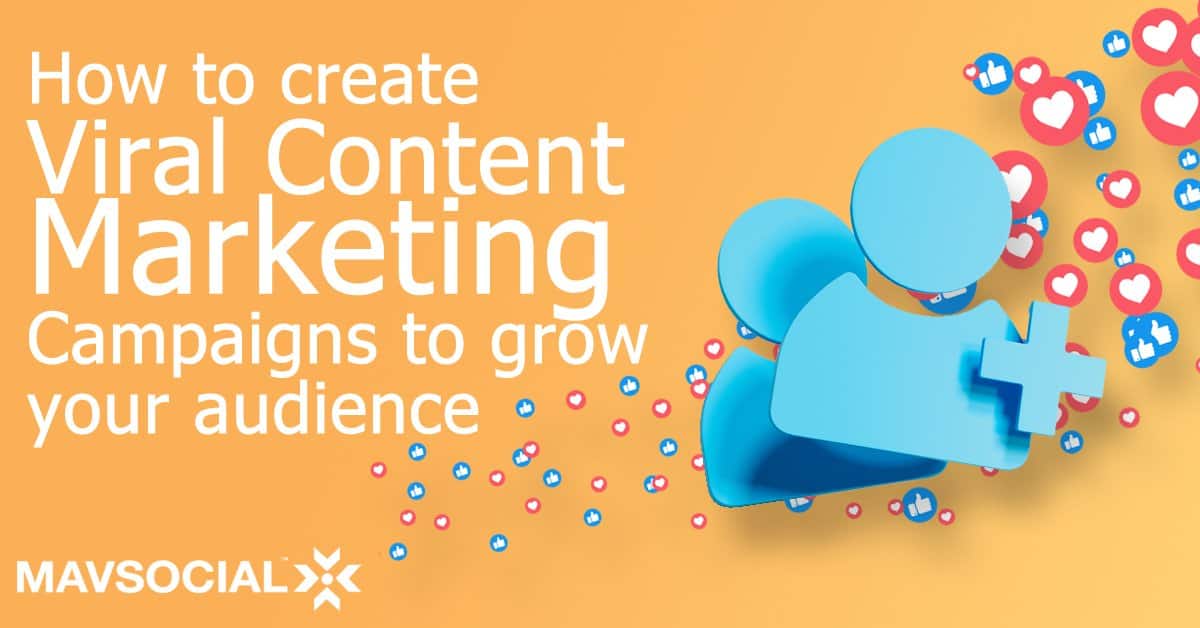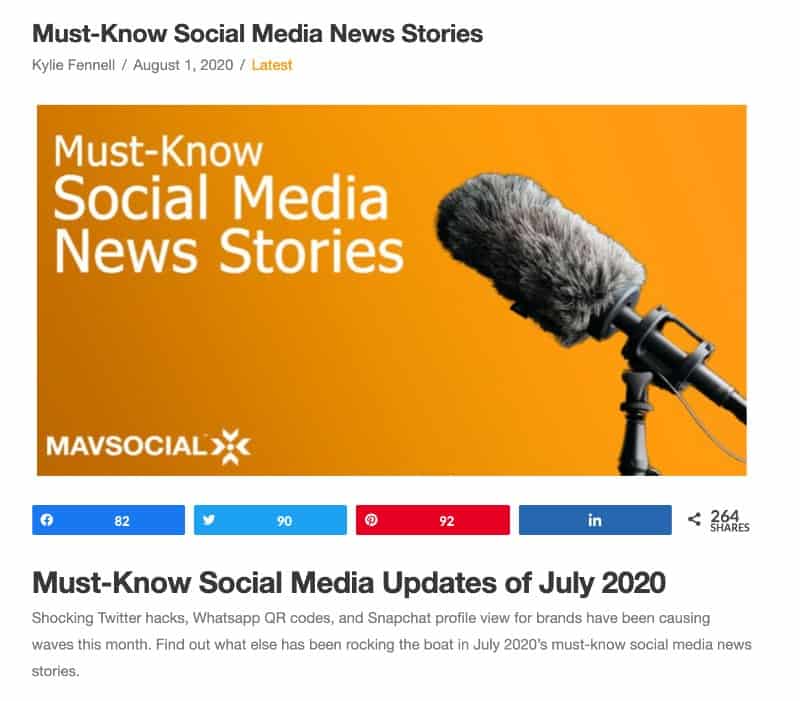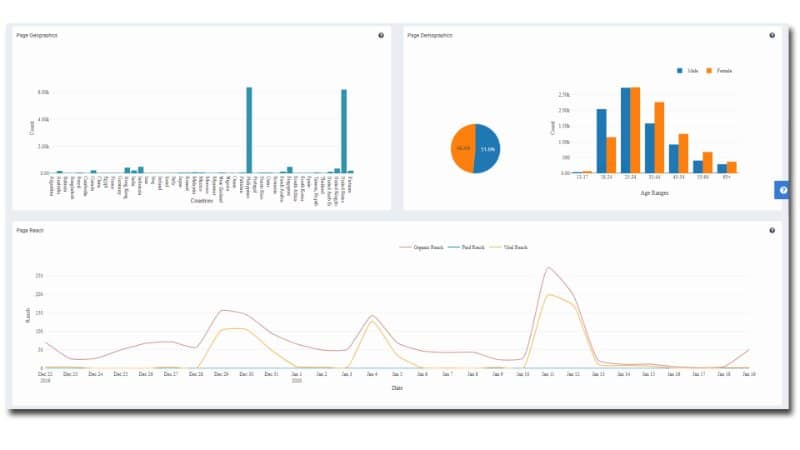If you’ve ever had a friend message you a video with an emphatic, “have you seen this?”, there’s a high likelihood that you’ve encountered some form of viral content. These days viral content is usually seen as something funny, unique, or timely that evokes emotion. But viral content doesn’t have to apply to memes and funny videos exclusively. Viral content can be instrumental in marketing strategies aimed at finding new customers or clients and growing your audience.
What is Viral Marketing?
Memes aside, viral marketing campaigns involve content that rapidly spreads online and generates interest in a product or brand. This content spreads as people share it with their friends, colleagues, and other industry professionals. The most common medium on which content goes viral is through social media. However, the content itself can exist on a blog, as a social media post, an infographic, a video, or more. The important thing is that it is valuable enough that people organically choose to share it.
Since social media moves fast, viral content tends to be highly relevant to current events. If it’s not timely, it needs to be evergreen enough to appeal to people at any time.
Why is Viral Content Marketing Important?
When a piece of content goes viral, it can generate tons of engagement, traffic, and brand awareness. Depending on what medium your content goes viral on, you may be exposing your brand to new audiences and expanding your reach. When you create something memorable and relatable enough to share it, it puts your brand at the top of people’s minds and encourages them to learn more about who you are.
You can’t force virality. Making your content marketing viral is largely dependent on how your audience feels about this content.
Even though it may seem like content goes viral at random, it still requires being intentional about the type of content you create and how you distribute it.
While you can’t force your content to go viral, there are best practices that you can implement to increase the likelihood of people finding your content, relating to it, and sharing it with others.
Best Practices For Creating Viral Content Marketing Campaigns
Learn about your audience
People share content that is practical and relevant to their interests. The relevance of your content will determine whether people deem it worthy of sharing. Knowing what is considered relevant information requires having a deep understanding of who your audience is and what they want. You need to be able to match the content you create with the people who need it most.
Encourage sharing and engagement
For your content to go viral, people need to share it. You can encourage your audience to share your content by creating calls to action to share a post on social media. You can also incorporate social media buttons on your blog or website that makes it easy for readers to post your content to their own channels.
On the MavSocial Blog, we include social sharing buttons on the top of each post. These buttons encourage readers to share the article on the platform of their choice and make it easy to share the post in just one click.
Stay up to date on industry trends
Before your content can go viral, you first need to know what kind of content to create. You need to come up with an idea that can solve a problem or appeal to a common issue within your niche. You can do topic research by following thought leaders in your industry on social media, setting up Google trend alerts, or staying up to date on current events and news. If you use a social media tool like MavSocial, you can utilize the Listening feature to monitor trending topics and find out what your audience is talking about.
Invest in high-quality content
Sure, there is plenty of low-quality content that has gone viral because of its humor or its ability to capture something at the right moment. But for brands trying to create viral content intentionally, you can’t rely on just being at the right place at the right time. You need to invest resources in creating and marketing the best content possible.
Know your platform
While creating high-quality content is important, it’s equally important to know what makes content high-quality on the specific platforms you’re targeting. Creating a viral tweet requires an entirely different type of content than creating a viral Facebook post or blog post.
Research the types of content going viral on the platforms you’re using to get an idea of how to format the marketing content you create.
Here are a few specific practices to apply to the most popular platforms to go viral on.
How to go viral on Twitter
Tweets need to be short, sweet, and highly relevant to your audience. Tweets that go viral tend to use humor to appeal to their target audience or provide valuable information that users want to share with their followers. Keep in mind that Tweets can only contain up to 140 characters, so keep the message concise.
Tom Bilyeu is a great example of someone who knows his audience deeply and creates Twitter content that is highly relevant to what they want to know. His short, yet highly valuable tweets regularly receive hundreds of retweets and thousands of likes.
You have to take control of how you think about your past. If you focus on the pain, the pain will grow.
But if you start asking powerful questions about the past you can completely change its emotional impact.
— Tom Bilyeu (@TomBilyeu) July 5, 2020
Twitter is also a great platform for distributing other types of content such as videos and blog posts and increasing their likelihood of going viral.
When posting on social media, it helps to use a tool like MavSocial to schedule your posts and identify the best times to post. Posting when your audience is most active can greatly increase your chances of going viral.
How to go viral on Facebook
Viral Facebook posts tend to have witty copy, are broken up into easy-to-read sentences, and avoid long paragraphs. Your Facebook post should include an eye-catching image that is relevant to the post text. A lot of brands marketing on Facebook also incorporate emoji into their posts to make certain content stand out even more.
How to go viral on Instagram
If you want to go viral on Instagram, you need to invest in high-quality graphics or videos that people want to share. The most popular types of posts on Instagram are high-quality images and informative graphics. When trying to create viral Instagram content, it’s also important to utilize hashtags as much as possible to distribute your content.
Here’s an example of an Instagram post from Neil Patel that followed this framework and as a result got over 10,000 views and thousands of likes.
View this post on Instagram
Use this strategy/process to help you build hundreds or potentially thousands of backlinks 🔥🚀
You may also like:
The Best Time to Post on Instagram for MAX Engagement
How to make a viral blog post
Viral blog posts tend to include at least 1,000 words of long-form content. That’s not to say that longer content is better, but make sure that your content covers the necessary information that the reader is looking for. Make sure that your blog posts are answering a specific question and adding value to the reader. To increase the likelihood of going viral, craft a compelling headline that instantly hooks readers before they click on the article.
Key Metrics to Track When Monitoring Your Campaigns
So, you’ve created the content, launched the campaigns, and now you’re waiting to see what happens. Once your content is live, it’s just as important to know what to track to see if your content is going viral.
Tracking key metrics can tell you what your audience is responding to and improve your campaigns in the future. The metrics you choose to track should directly correlate to your overall marketing goals. Vanity metrics like reach and impressions are great to know, but if your ultimate goal is to increase opt-ins or sales from your website, those metrics won’t mean much if your overall clicks and conversions are low. Take a look at your goals for a particular campaign, and keep an eye on metrics that will help you achieve those goals.
Here are the key metrics we recommend tracking within your campaigns.
If you are trying to go viral on social media, we recommend tracking:
- Reach
- Impressions
- Engagements
- Likes
- Comments
- Shares/reshares
If your goal is to create viral content on your blog, we recommend tracking:
- Pageviews
- Time spent on page
- Shares
- Comments on the post
- Conversions (if your post include an opt-in)
Using a tool like MavSocial can help you track your campaign analytics and make it much easier to identify trends in your data. MavSocial can help you monitor your social media activity in real-time and analyze data such as user demographics and post engagement.
Knowing what aspects of your campaigns are performing well and where there are gaps will help improve your campaigns. When you understand what your audience engages with most, you can create content that appeals to them, which will increase the chances of your content going viral in the future.
More Examples of Successful Viral Content Marketing Campaigns
Shopify’s Video-a-Day Facebook Campaign
Shopify has continuously proven that even B2B companies can utilize viral marketing strategies. Over the last few years, they’ve substantially increased their video marketing production and adopted a video format that checks all of the boxes of viral marketing campaigns. By creating short, informative videos aimed at solving their audience’s core problems, they’ve, in turn, created a lead generation machine for themselves.
In 2019, after experimenting with posting one video on their Facebook page per day for a month, they hit viral status with this video, which resulted in over 1,000,000 views.
These days they take a multichannel approach to their content marketing and regularly go viral among the e-commerce community with content they create on Facebook, YouTube, and Instagram.
Oreo’s 2013 Super Bowl Blackout Tweet
Oreo’s social media team capitalized on relevance, timeliness, and humor when they sent out this tweet minutes after the Super Bowl stadium experienced a blackout. During large scale events, a lot of people turn to social media for updates, and they acted fast with a clever tweet that circulated the internet for weeks following the event.
Power out? No problem. pic.twitter.com/dnQ7pOgC
— OREO Cookie (@Oreo) February 4, 2013
This is an example of keeping a finger on the pulse and understanding the timing of your posts. This post was perfectly timed and went live while millions of users were logged in to social media for updates.
Old Spice “The Man Your Man Could Smell Like” Video Campaign
Since launching its first viral campaign in 2010, Old Spice has made a name for itself in the marketing world as a viral marketing machine. Users are always waiting to see what kind of eccentric commercials or videos they will come up with next. Their most iconic video ad debuted the appearance of their brand character “The Old Spice Man,” whose videos have amassed over 100 million views.
They capitalized on the success of this campaign by launching a series of viral videos where their brand character responded to comments and questions on Facebook and Twitter. This campaign garnered the brand over 600,000 views on their videos on Facebook, and they grew their Twitter following by more than 1,000 percent through this campaign. In their case, it’s clear that Old Spice knew their audience well. They tracked the success of that first video and leaned into its popularity by following the same roadmap and style of content that helped them go viral in the first place.


